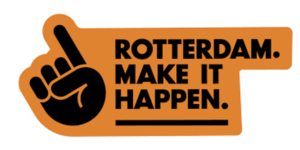Originally published by ANA.
In today’s economy, the inflation rate is constantly rising in response to rapid market fluctuations, and it’s causing large shifts in consumer behavior — especially in recent months as the cost of living has risen. Inflation has already impacted consumer behavior in ways such as holding off on large purchases, making switches to alternative (less expensive) brands, spending less on dining out, and spending more frequently before prices increase.
These changes in consumer behavior beg the question: What can brands do to avoid loss in capital and ensure that their customers remain loyal? It starts with having the right tools in place to keep pace with trends in pricing, packaging, positioning, and more.
The rise in consumer consciousness
As a result of the COVID-19 pandemic that has plagued markets for the last two years, consumers have gained a greater sense of consciousness as to how they allocate and spend their money. Inflation in the United States has reached a record high for the last 40 years, causing many Americans to be concerned about their personal finances. In fact, key findings from one of Toluna’s recent surveys — which explored current perceptions on inflation, rising costs, and impacts on financial decision — revealed that 52 percent of Americans are extremely concerned about inflation/rising prices.
As a result, consumers are being more strategic and efficient in their spending to save money. This behavioral change is manifesting in decisions like putting off technology/device upgrades, delaying renovations and home repairs, limiting travel/vacation plans and expenses, decreasing spending on take-out, and reducing credit card payments.
Unsurprisingly, another area where consumer spending is being impacted is in gas prices. With gas prices at an all-time high since 2008, exceeding the $4 per gallon mark, 28 percent of Americans are reducing the amount they drive to save on fuel costs. And not only have these rising gas prices influenced car usage, but they have also caused consumers to delay new vehicle purchases and reduce leisure activities that require commutes.
Indeed, consumer consciousness is greatly affecting leisure spending in 2022. With food costs and service fees on the rise, there has been a decrease in spending on dining out (49 percent). Other leisure activities, such as attending concerts and sports events, have experienced a decline, as well.
How brands can respond to consumer shifts
These shifts in behavior have made it imperative for brands to adjust and meet consumers’ needs. As inflation has risen, consumers have shifted to spending on more cost-efficient brands, which is creating more competition on pricing. And this won’t stop soon, as 59 percent of respondents said that they will trade down to less expensive brands in various product categories such as food, personal care, and alcohol.
How can brands combat the consequences of inflation? Start by considering aspects such as price tiering, packaging, and offerings. Brands must consider the economic factors that influence spending and adjusting price tiers to appeal to different consumer groups is one way to account for this.
As for packaging, it is important for brands to alter sizing of goods to adapt to preferences. For example, many consumers prefer to buy in bulk or larger sizes for cost effectiveness, but not all people are able to afford bulk pricing. To account for this, consider providing smaller, more budget-conscious products.
Brands can also grab consumer attention and mitigate the stress of spending by offering incentives to customers. As inflation continues to rise, consumers will seek out brands’ less expensive products, causing a decrease in demand for premium items. To protect sale margins, brands should consider offering cost-reducing incentives, rather than lowering the prices of premium products altogether. For example, offering a coupon or discount on a purchase will give customers an incentive to purchase the item and dissuade them from looking for cheaper alternatives.
Powering ahead
With inflation and the cost of living continuing to rise, consumer behavior will continue to shift. That’s why it’s crucial for brands to develop an insights-driven approach to understanding consumers’ thoughts, predicting their behaviors, and developing strategies to respond to changes. In doing so, brands can adapt their products, services, and market strategies to reflect the current and future economic landscape.




